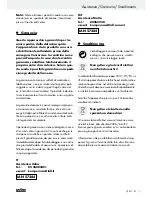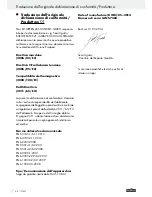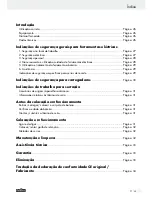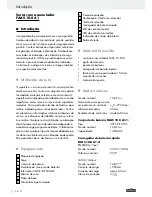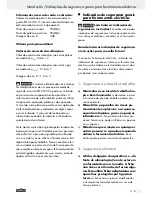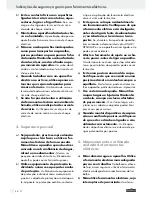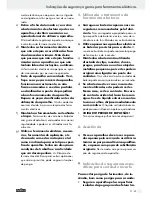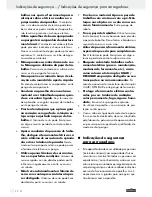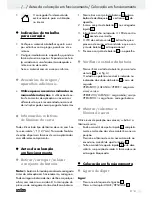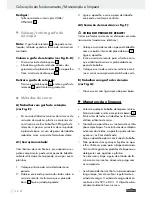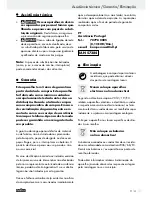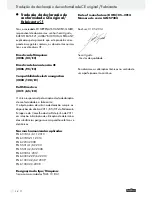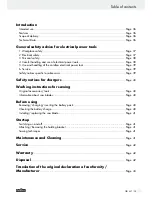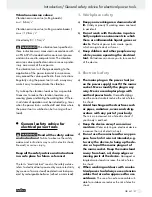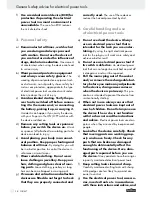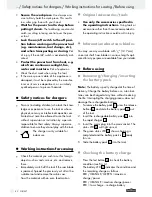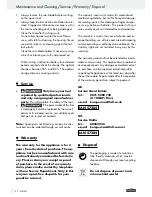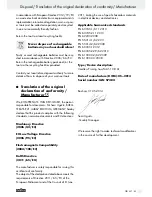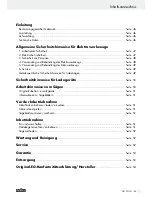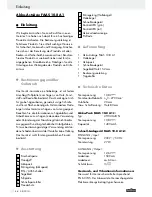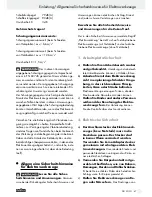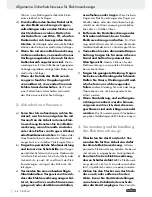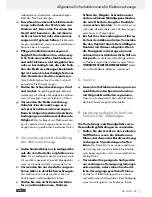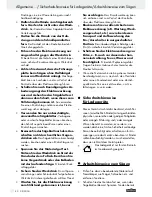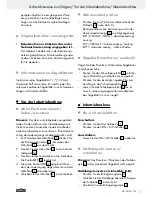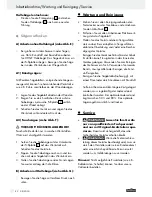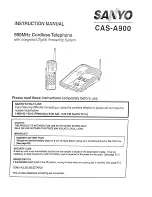
37
GB/MT
®
Introduction
Introduction / General safety advice for electrical power tools
Vibration emission values:
Vibration emission value (cutting boards):
a
h,B
= 6.6 m / s
2
Vibration emission value (cutting wooden beams):
a
h,WB
= 12.6 m / s
2
Uncertainty K = 1.5 m / s
2
The vibration level specified in
these instructions was measured in accordance with
an EN 60745 standardised measurement process
and can be used to compare tools. The vibration
emission value specified can also serve as a prelim-
inary assessment of the exposure.
The vibration level will change according to the
application of the power tool and in some cases,
may exceed the value specified in these instructions.
Regularly using the power tool in such a way may
make it easy to underestimate the vibration.
Try to keep the vibration loads as low as possible.
Measures to reduce the vibration load are, e.g.
wearing gloves and limiting the working time. Where-
in all states of operation must be included (e.g. times
when the power tool is switched off and times where
the power tool is switched on but running without
load).
General safety advice for
electrical power tools
Read all the safety advice
and instructions!
Failure to observe the safety
advice and instructions may result in electric shock,
fire and / or serious injury.
Keep all the safety advice and instructions
in a safe place for future reference!
The term “electrical tool” used in the safety advice
refers to electrical tools powered by mains electricity
(by means of a mains lead) and electrical tools pow
ered by rechargeable batteries (without a mains lead).
1.
Workplace safety
a)
Keep your working area clean and well
lit.
Untidy or poorly lit working areas can lead
to accidents.
b)
Do not work with the device in poten-
tially explosive environments in which
there are inflammable liquids, gases or
dusts.
Electrical power tools create sparks,
which can ignite dusts or fumes.
c)
Keep children and other people away
while you are operating the electrical
tool.
Distractions can cause you to lose control
of the device.
2.
Electrical safety
a)
The mains plug on the power tool (or
on the power supply) must fit the mains
socket. Never modify the plug in any
way. Never use adapter plugs with
earthed power tools.
Unmodified plugs
and the correct sockets reduce the risk of elec-
tric shock.
b)
Avoid touching earthed surfaces such
as pipes, radiators, ovens and refrig-
erators with any part of your body.
There is an increased risk of electric shock if
your body is earthed.
c)
Keep the device away from rain or
moisture.
Water entering an electrical device
increases the risk of electric shock.
d)
Do not use the mains lead for any pur-
pose for which it was not intended, e.g.
to carry the device, to hang up the de-
vice or to pull the mains plug out of
the mains socket. Keep the mains lead
away from heat, oil, sharp edges or
moving parts of the device.
Damaged or
tangled mains leads increase the risk of elec
tric shock.
e)
When working outdoors with an elec-
trical power tool always use extension
cables that are also approved for use
outdoors.
The use of an extension cable suit
able for outdoor use reduces the risk of electric
shock.
Summary of Contents for FAAS 10.8 A1
Page 3: ...1 3 2 C D A B 4 5 6 7 8 9 10 12 14 13 11 15 16 10 8 11 ...
Page 4: ...F G E ...
Page 44: ...44 ...

